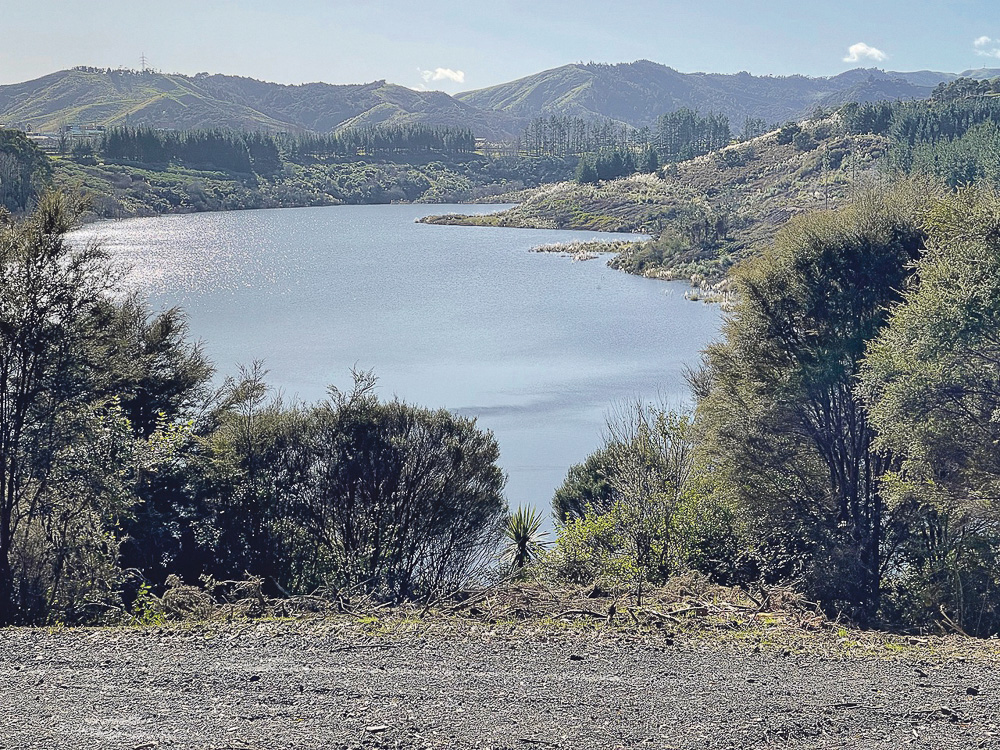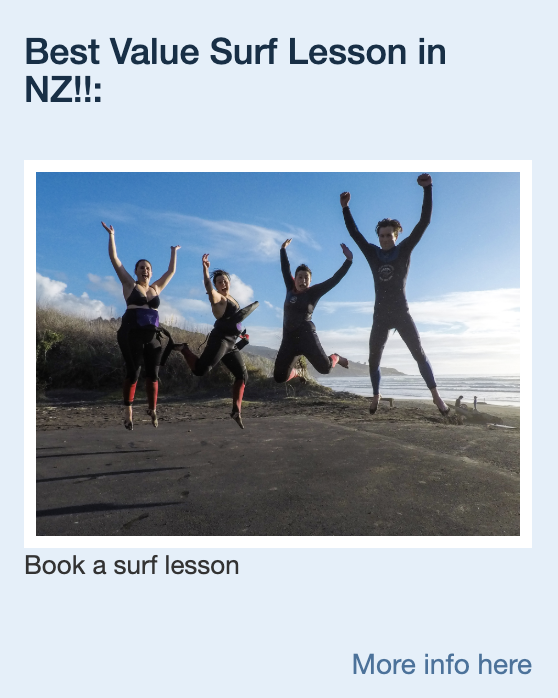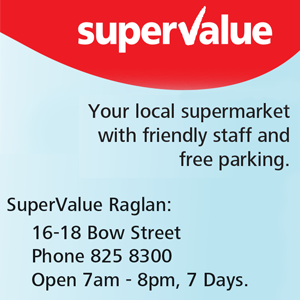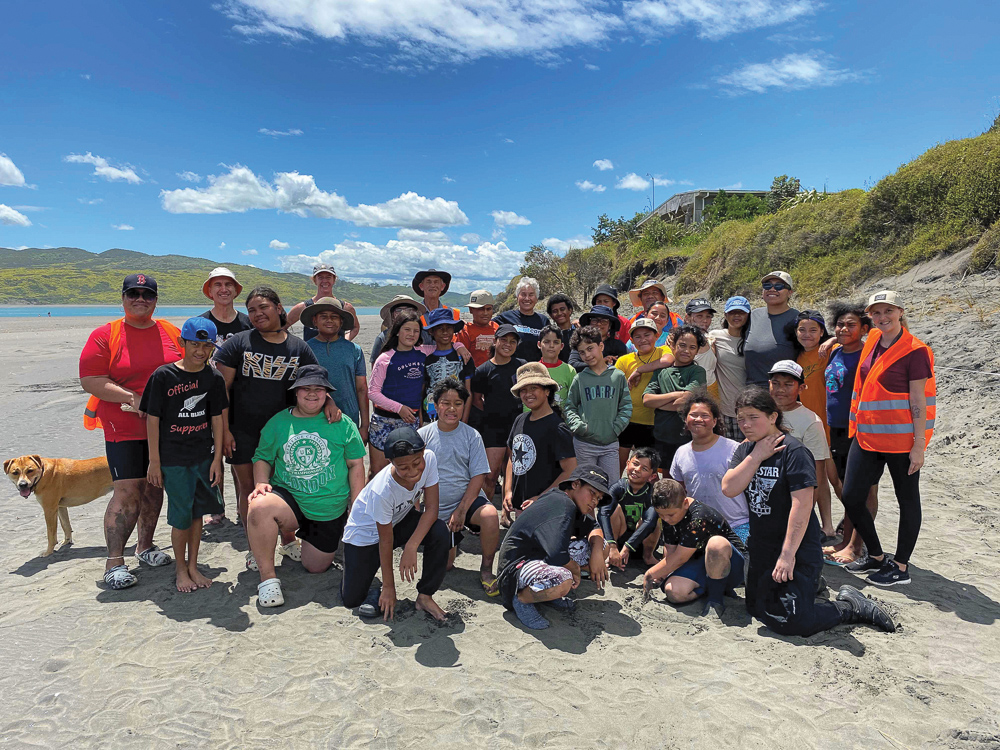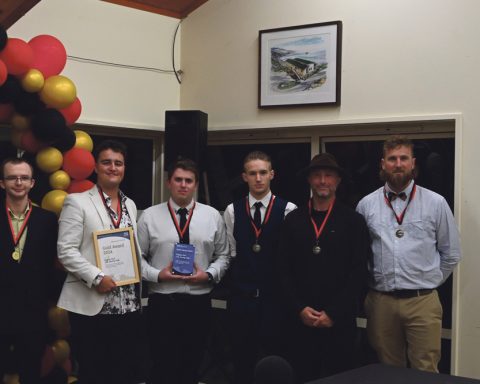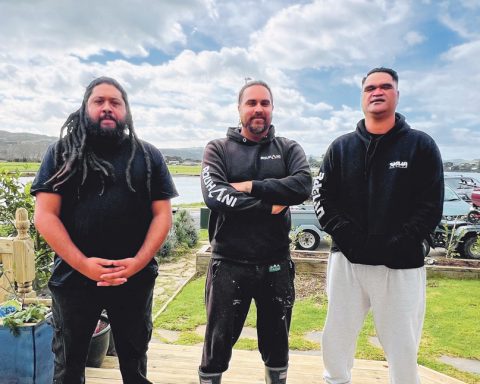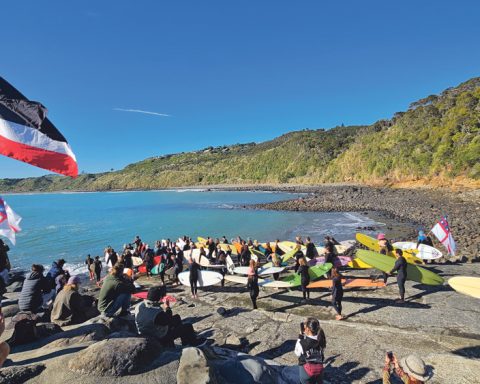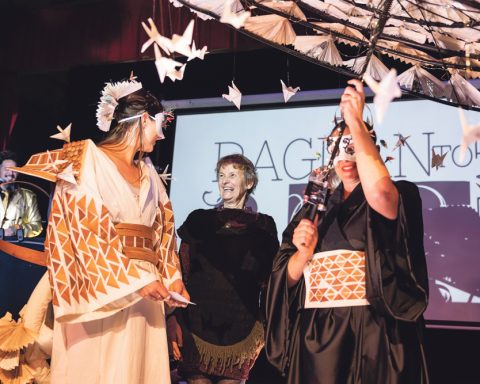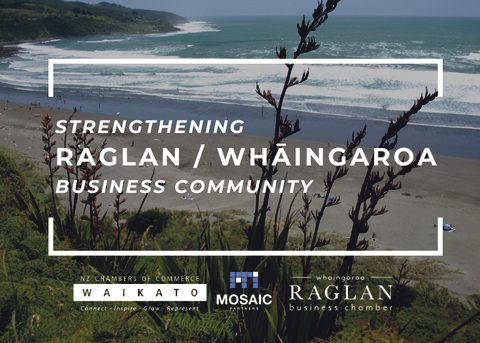A visionary project to regenerate a former Huntly coalmine and create a public outdoor education and recreation park, has its beginnings with a Raglan school camp trust.
Purchased in 2017 by Huntly business owners Murray and Jennifer Allen with the dream of returning the lake back to its former glory, the Kimihia Lakes Development Project is set to become a major asset for Huntly.
There’s a beautiful synchronicity in how the project has come together with the convergence of the Huntly Karioi Outdoor Trust and the Kimihia Community Charitable Trust. Former Karioi Trust member, the late Brian Curle, was the driving force behind this collaboration. His friendship with the Allens and Kimihia Lakes project manager and longtime Raglan local and businessman Charlie Young was key in making it all possible.
The Karioi Outdoor Trust originally purchased land in 1973 in Whale Bay, in the foothills of Karioi for a school camp for Huntly College students.
When operating the school camp became uneconomic, the trust leased the camp to Charlie and his wife Erin Rogers in 2000 and they ran it as an eco-lodge/surf school/backpacker’s accommodation.
In 2019, the Raglan property and Charlie and Erin’s business were sold as a package to support the Kimihia Lakes project.
“It was a unique and successful business venture for us at the time and we met and worked alongside some amazing people. But it wasn’t fulfilling the original purpose the Karioi Trust had in mind for it which was to support Huntly youth directly” Charlie says.
It was Brian’s idea to use the Trust’s original land investment to help establish a new Huntly lake-based outdoor education centre for the local youth and community.
Charlie says it will take decades to regenerate what was lost to open cast mining, however there’s already enough water in the lake to make it viable for water sports.
“The original lake used to be 10-metres in depth at the most and now it’s a clean, deep-water lake,” he says.
Slowly filling with rainwater, the mine’s huge pit is creating a 1.2km-long, 500m-wide and 59m-deep roto (lake) when it’s at capacity. One of the few benefits of the mining activity at the lake is now it can be considered a new freshwater resource.
Local students have already begun using the site for overnight camping, swimming, waka ama, kayaking, mountain biking and forest walks.
The project will also make a massive environmental and ecological impact. Rehabilitation to the site is already reaping benefits; the lake’s clear water is attracting water birds, such as endangered New Zealand Dabchicks (Weweia or Grebe), who deep dive for fish.
Eventually the rising water will start draining into the adjacent remnant of the original shallow Kimihia peat lake, saving it from toxicity and drying off. Ultimately it will be reconnected to the Waikato River.
On top of this, Charlie says there will be some exciting employment prospects as the project progresses.
He’s adamant that the business plan for the development not only makes sense economically but will also deliver environmental and cultural benefits.
“We’ve just cracked the earthworks for the new campground, and it will initially be ready to be used for school camps, public camping, motor homes and campervans and eventually it will have motel units and cabins.”
Charlie says, while it’s important for the development to be able to pay its way, it will still be “a 100 per cent community asset”.
The community and the wider public will have access to the lake and its surrounds for walking, bike riding and water activities.
Other planned activities that people can eventually pay to do, such as hiring kayaks, paddle boards and bikes, and a master planned multi-purpose recreational and community complex – for weddings, conferences, and community gatherings, will provide an ongoing source of revenue.
“As a bottom-up community lead project we could not have begun our redevelopment journey without the help and funding support from Momentum, Karioi Outdoor Trust, WEL Energy Trust, WDC and Better Off Fund, Trust Waikato, Lottery Community, and COGs”, Charlie says.
“We want this development to be self-funding on an ongoing basis to enable continued reinvestment to take care of this place, so it is a legacy for future generations. We, along with the community, are the kaitiaki of this place.”
